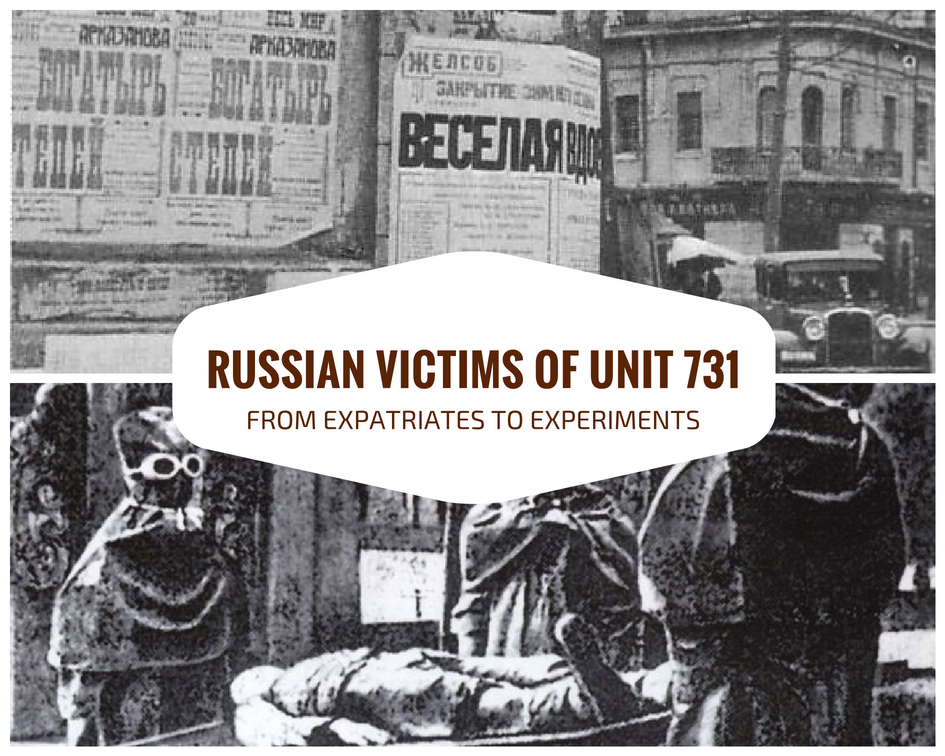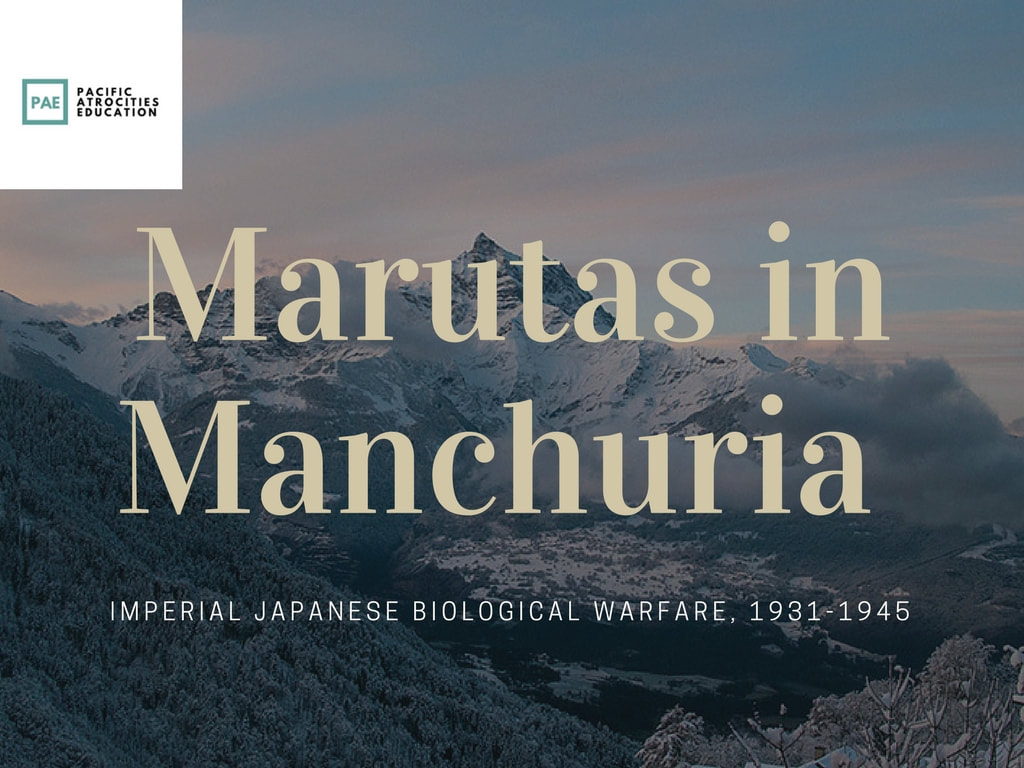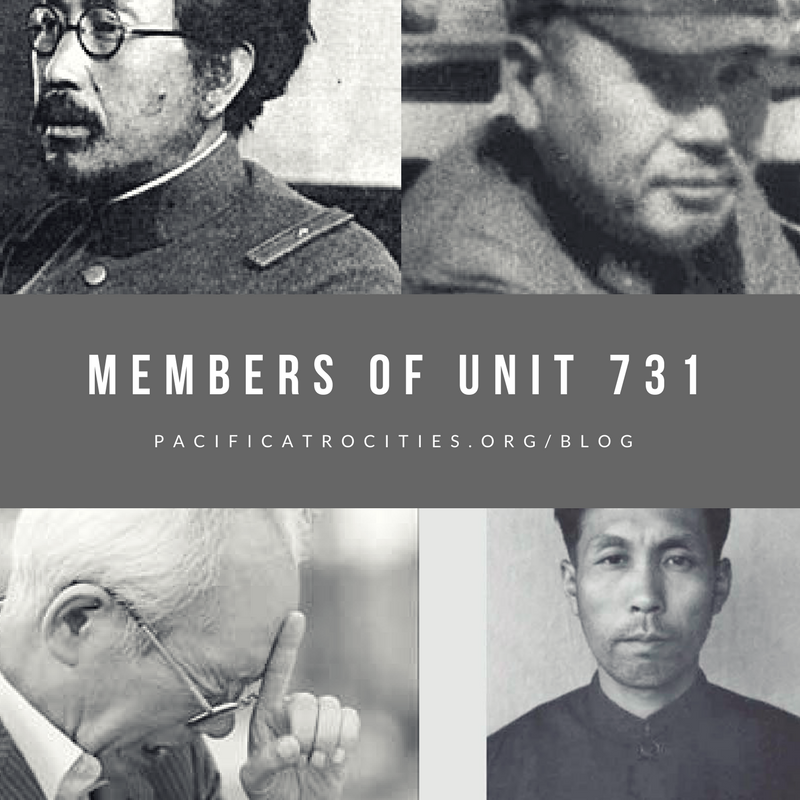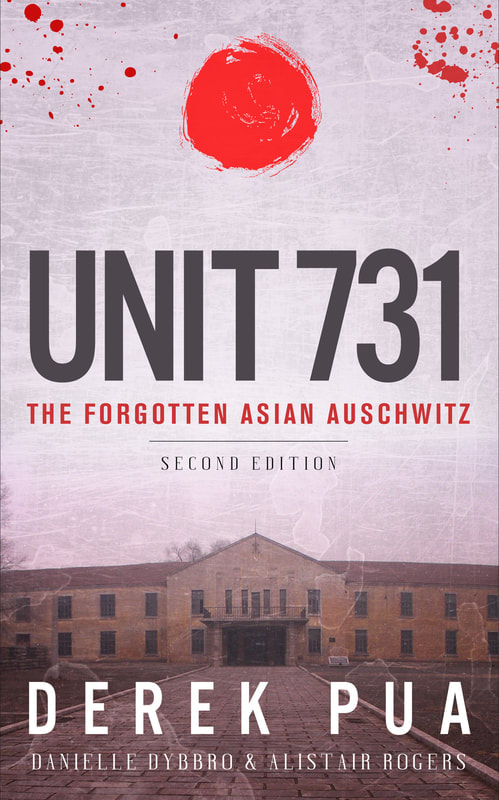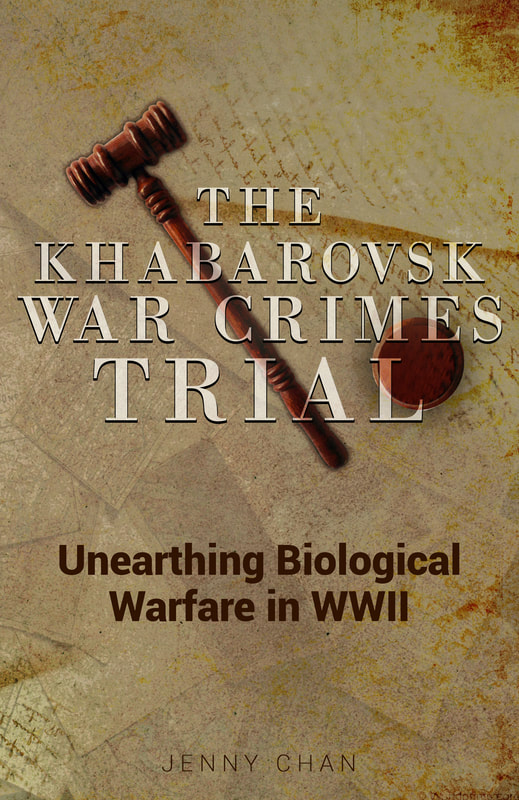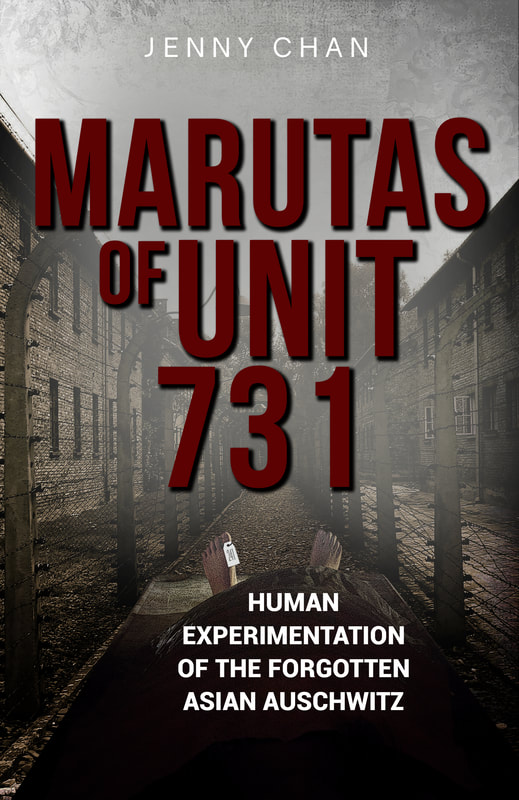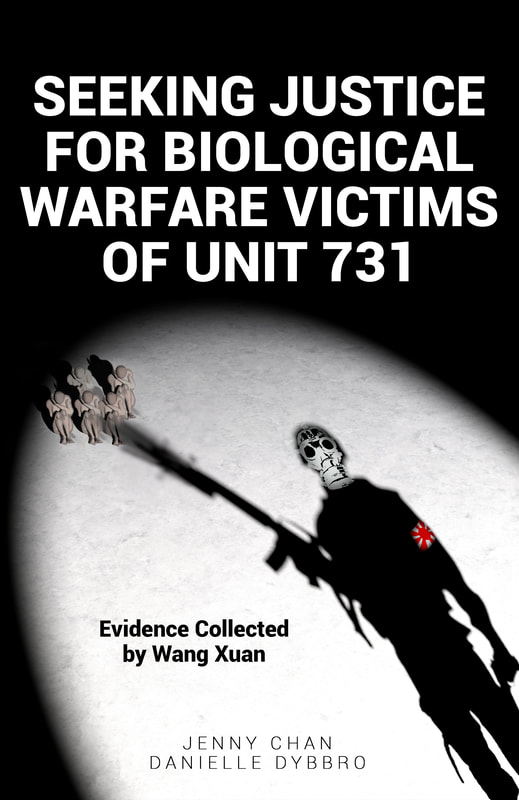|
by Sophie Hammond
In 1936, the Japanese built Unit 731—the administrative center of the top secret biological warfare project of the Imperial Japanese Army—in the isolated Pingfang District of the city of Harbin in Manchuria. At the time, Harbin was a city with a large Russian minority population, and writer Morimura Seiichi has hypothesized that of the 3,000 prisoners experimented on at Unit 731, up to 30% were Russian.
Harbin was built in the late nineteenth century as part of the Russian Empire’s colonizing effort. In 1896, China sold Russia the right to build the Chinese Eastern Railway across Manchuria, from the city of Chita in Eastern Siberia to the city of Vladivostok, an important Pacific port for the Russian Empire. This deal made Harbin, where three train lines now met, a major rail hub. Immediately an influx of Russian engineers, refugees, and criminals began. The relationship between the new immigrants and the Asian ethnic groups already living in Manchuria was rarely smooth—according to anecdotes, some of the arriving Russian soldiers would shoot out of train windows at locals as they sped past. Later came Russian Jews, to whom the Czar promised freedom from anti-Semitic laws if they served as Russian colonists in Manchuria. Anti-Communist White Russians fled to Harbin en masse during and after the Russian Civil War. By 1922, the Russian population of the city had soared to over 100,000. Artists, writers, and political refugees created a cosmopolitan, Russianized culture in the city they called their “Paris of the Far East”.
After the Bolshevik Revolution, the Chinese and the Soviets fought over who should run the Chinese Eastern Railway. In 1924 China and the Soviet Union agreed to manage the CER together, with the Soviet Union acting as the dominant partner. Soviet citizens emigrated to Harbin to work on the railroad and caused friction with the White Russians already working there. Over most of the next decade, China and the Soviet Union battled for control over the railroad, and by extension, over Harbin. These disputes ended when Japan invaded Harbin in 1931. The Soviet Union sold the CER to Japan four years later, and thousands of Soviet railroad employees left Harbin. Non-Soviet Russians also emigrated quickly. By 1939, some sources say that only 28,000 Russians lived in Harbin. Russians who stayed often faced the loss of their jobs to Japanese settlers and were vulnerable to arrests by the Kempeitai, a branch of the Imperial Japanese Army who patrolled the streets of Harbin like a police force. They had the power to arrest anyone accused of being a Communist sympathizer, an anti-Japanese saboteur, a spy, or a “vagrant”. Fearing the charge of vagrancy, some Russian families never let their children leave home after 5 pm. Unit 731 got the vast majority of their Russian prisoners from those Russians arrested by the Kempeitai. Most prisoners of Unit 731 were brought there after having been charged and convicted of capital crimes, usually without even the pretense of a trial. However, when the supply of victims was running low, the Kempeitai were authorized to send even “vagrants” straight to Unit 731. Very little information remains about who these Russian victims were or what they suffered. One account mentions a Russian mother and daughter trapped in a gas chamber, the mother frantically trying to shield her daughter from breathing in the gas as researchers safely on the outside of the chamber timed their convulsions. A Japanese Youth Corps member training at Unit 731 gave later testimony that among the subjects for syphilis testing were two Russian women with their children, a girl of four or five and a boy of six or seven. A former Unit 731 medical worker stated that he once saw a white man cut length-wise and pickled in a six-foot-high jar of formaldehyde, a man the worker assumed was Russian. Some of the Russian victims were not actually citizens of Harbin but Soviet prisoners of war captured in border skirmishes. One researcher later admitted to being personally responsible for the deaths of at least forty Soviet citizens in experiments at Unit 731. While details are far and few between, it is certain that all of the Russians held prisoner in Unit 731 suffered greatly and that none of them survived. In the last days of the war, any remaining prisoners were killed and buried. In the end, it was the Soviet Union, in response to so many Soviet and Russian victims, who subjected the Unit 731 researchers they had captured to an open trial for war crimes. The other researchers made a deal with United States occupation authorities for immunity in exchange for their research data. The Khabarovsk War Crime Trials of 1949 found all eight Japanese researchers and four military servicemen guilty of biological warfare and sentenced them to work in Soviet labor camps for two to twenty-five years. As part of a political compromise, the remaining Japanese prisoners were released and returned to Japan in 1956, and historian Sheldon Harris thinks it is likely that the researchers gave the Soviets information about Unit 731’s research data in exchange for leniency. But while the week-long Khabarovsk Trials were at least partly for propaganda purposes, Harris in his book Factories of Death accepts the accuracy of their findings, saying, “Evidence introduced during the hearings was based on eighteen volumes of interrogations and documentary material gathered in investigations over the previous four years. Some of the volumes included more than four hundred pages of depositions....Unlike the Moscow Show Trials of the 1930s, the Japanese confessions made in the Khabarovsk trial were based on fact and not the fantasy of their handlers.” To learn more about Unit 731 itself, see these blog posts: http://www.pacificatrocities.org/blog/the-experiments-of-unit-731-torture-in-the-name-of-warfare http://www.pacificatrocities.org/blog/members-of-unit-731 http://www.pacificatrocities.org/blog/background-of-unit-731 http://www.pacificatrocities.org/blog/unit-731-the-secret-japanese-military-testing-facility-for-biological-warfare http://www.pacificatrocities.org/blog/marutas-in-manchuria-imperial-japanese-biological-warfare-1931-1945 References
Related ArticlesRelated Books
4 Comments
Barbara Brown
7/11/2021 06:02:00 pm
I don't trust the Japanese or any other Asians when it comes to war it seems they don't have a conscious when comes to war .I won't even see an Asian doctor here in the United States not will go to a German
Reply
John Cort
10/4/2021 03:21:10 am
Barbara, you need professional help for your racism. Going back to school would also help you
Reply
Leave a Reply. |
- Home
- Stories
-
Internship
- Summer 2024 Internship
- Summer 2023 Internship
- Fall 2022 Internship
- Summer 2022 Internship
- Summer 2021 Internship
- Fall 2020- Spring 2021 Internship
- Summer 2020 Internship
- Fall 2019 Internship
- Summer 2019 Internship >
- School Year 2018-2019 Internship
- Summer 2018 Internship >
- Fall 2017 Internship
- Summer 2017 Internship >
- Books
- Archives
-
Resource Page
-
Supplementary Research Guides
>
- Unit 731 - Guide >
-
Philippines' Resistance - Guide
>
- Philippines World War II Timeline
- The Japanese Invasion & Conquest of the Philippines
- Bataan Death March
- Formation of Underground Philippines Resistance
- Supplies of the Guerrilla Fighters
- The Hukbalahap
- Hunter's ROTC
- Marking's Guerrillas
- United States Army Forces in the Philippines of Northern Luzon (USAFIP-NL)
- The Aetas
- Chinese and Filipino-Chinese Nationalist Guerrilla Units
- The Female Faces of the Philippine Guerrillas
- Rising Sun Flag - Guide >
- Pinay Guerrilleras - Guide >
- Fall of Singapore - Guide >
- Three Years and Eight Months - Guide >
- Siamese Sovereignty - Guide >
- The Khabarovsk War Crimes Trial - Guide >
- Unit 731 Cover-up : The Operation Paperclip of the East - Guide >
- Marutas of Unit 731 - Guide >
- Prince Konoe Memoir - Guide >
- Competing Empires in Burma - Guide >
- Battle of Shanghai - Guide >
- Ishi Shiro - Guide >
- Taiwan The Israel of the East - Guide >
- Seeking Justice for Biological Warfare Victims of Unit 731 - Guide >
- Rice and Revolution - Guide >
- Clash of Empires - Guide >
-
Hunger for Power and Self-SufficiencyI - Guide
>
- The Influence of War Rations on Post-War Culinary Transformations
- How World War II Complicated Food Scarcity and Invention
- American Military Innovations
- Government-Sponsored Food Inventions in Europe during World War II
- Feeding the Army: The Adaptation of Japanese Military Cuisine and Its Impact on the Philippines
- Mixed Dishes: Culinary Innovations Driven by Necessity and Food Scarcity
-
Denial A Quick Look of History of Comfort Women and Present Days’ Complication - Guide
>
- The Comfort Women System and the Fight for Recognition
- The Role of Activism and International Pressure
- The Controversy over Japanese History Textbooks
- The Sonyŏsang Statue and the Symbolism of Public Memorials
- Activism and Support from Japanese Citizens
- The Future of Comfort Women Memorials and Education
- Echoes of Empire: The Power of Japanese Propaganda - Guide >
- Lesson Plans >
-
Supplementary Research Guides
>
|
Pacific Atrocities Education
730 Commercial Street San Francisco, CA 94108 415-988-9889 |
Copyright © 2021 Pacific Atrocities Education.
We are a registered 501 (c)(3) charity. |
- Home
- Stories
-
Internship
- Summer 2024 Internship
- Summer 2023 Internship
- Fall 2022 Internship
- Summer 2022 Internship
- Summer 2021 Internship
- Fall 2020- Spring 2021 Internship
- Summer 2020 Internship
- Fall 2019 Internship
- Summer 2019 Internship >
- School Year 2018-2019 Internship
- Summer 2018 Internship >
- Fall 2017 Internship
- Summer 2017 Internship >
- Books
- Archives
-
Resource Page
-
Supplementary Research Guides
>
- Unit 731 - Guide >
-
Philippines' Resistance - Guide
>
- Philippines World War II Timeline
- The Japanese Invasion & Conquest of the Philippines
- Bataan Death March
- Formation of Underground Philippines Resistance
- Supplies of the Guerrilla Fighters
- The Hukbalahap
- Hunter's ROTC
- Marking's Guerrillas
- United States Army Forces in the Philippines of Northern Luzon (USAFIP-NL)
- The Aetas
- Chinese and Filipino-Chinese Nationalist Guerrilla Units
- The Female Faces of the Philippine Guerrillas
- Rising Sun Flag - Guide >
- Pinay Guerrilleras - Guide >
- Fall of Singapore - Guide >
- Three Years and Eight Months - Guide >
- Siamese Sovereignty - Guide >
- The Khabarovsk War Crimes Trial - Guide >
- Unit 731 Cover-up : The Operation Paperclip of the East - Guide >
- Marutas of Unit 731 - Guide >
- Prince Konoe Memoir - Guide >
- Competing Empires in Burma - Guide >
- Battle of Shanghai - Guide >
- Ishi Shiro - Guide >
- Taiwan The Israel of the East - Guide >
- Seeking Justice for Biological Warfare Victims of Unit 731 - Guide >
- Rice and Revolution - Guide >
- Clash of Empires - Guide >
-
Hunger for Power and Self-SufficiencyI - Guide
>
- The Influence of War Rations on Post-War Culinary Transformations
- How World War II Complicated Food Scarcity and Invention
- American Military Innovations
- Government-Sponsored Food Inventions in Europe during World War II
- Feeding the Army: The Adaptation of Japanese Military Cuisine and Its Impact on the Philippines
- Mixed Dishes: Culinary Innovations Driven by Necessity and Food Scarcity
-
Denial A Quick Look of History of Comfort Women and Present Days’ Complication - Guide
>
- The Comfort Women System and the Fight for Recognition
- The Role of Activism and International Pressure
- The Controversy over Japanese History Textbooks
- The Sonyŏsang Statue and the Symbolism of Public Memorials
- Activism and Support from Japanese Citizens
- The Future of Comfort Women Memorials and Education
- Echoes of Empire: The Power of Japanese Propaganda - Guide >
- Lesson Plans >
-
Supplementary Research Guides
>
